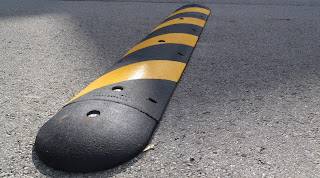online Speed bumps, also known as speed humps or cushions, are a common feature on roadways and even residential streets. They are used to slow traffic and reduce speeding. In addition to reducing accidents, they can also help keep cars from driving too fast and getting into trouble behind the wheel—whether they’re doing so intentionally or not.

Speed bumps are a common feature on roadways, even residential streets.
Speed bumps are a common feature on roadways, even residential streets. There are different types of speed bumps and they can be used to reduce speeding and improve safety.
There are three main types of speed bumps: vertical, horizontal, and diagonal (also known as “curb bulbs”). Vertical bumps are designed for high-traffic areas like intersections or school zones; they’re placed directly in front of the crosswalk so that drivers will slow down before entering it. Horizontal bumps are typically installed along long stretches of road where there aren’t any intersections or stop signs–they’re usually spaced about 6 feet apart from each other so you don’t hit them too quickly while driving at higher speeds than necessary!
Diagonal curb bulbs are similar in design but have more surface area than vertical or horizontal models which helps keep cars from going too fast while still allowing pedestrians access across busy streets without fear.
Speed bumps are generally made of concrete or asphalt.
Speed bumps are generally made of concrete or asphalt. The bump is designed to slow traffic down, which helps reduce speeding and accidents. However, if you hit a speed bump too fast, it can result in damage to your vehicle’s suspension system and even injury to the driver and passengers.
The speed bump’s purpose is to slow drivers down and discourage them from speeding. The bumps can cause damage to your vehicle if you hit them at a high rate of speed, especially if they are made of concrete or asphalt.
Bumps in the road can help keep cars moving at a safe speed
Speed bumps can help to reduce speeding and increase safety. In fact, speed bumps are one of the most effective ways to slow down traffic. They can be installed in residential areas or school zones and are a cheaper alternative to other types of traffic calming measures like speed humps (aka “sleeping policemen”).
Speed bumps provide an effective way for drivers to adjust their speeds without having to slow down completely or stop completely at each intersection. The gentle rise on each side of the road gives drivers a visual signal that they need to decrease their speed in order not to hit it head-on with their vehicles’ bumpers or hoods when going over them. This lets people know what they’re getting into ahead of time so they don’t feel like they’re suddenly being punished by having no control over how fast they go anymore!
Conclusion
In conclusion, speed bumps are a common feature on roadways and residential streets. They help keep cars moving at a safe speed by slowing them down when they’re traveling too fast. While many people dislike bumps in the road, they can be useful if used properly and placed in areas where there aren’t many other options available for slowing down traffic flow–like adding another lane or widening sidewalks would require too much money or time spent on construction projects!
Source:https://trafficsafetysigns.blogspot.com/2023/05/speed-bumps-how-they-impact-traffic.html